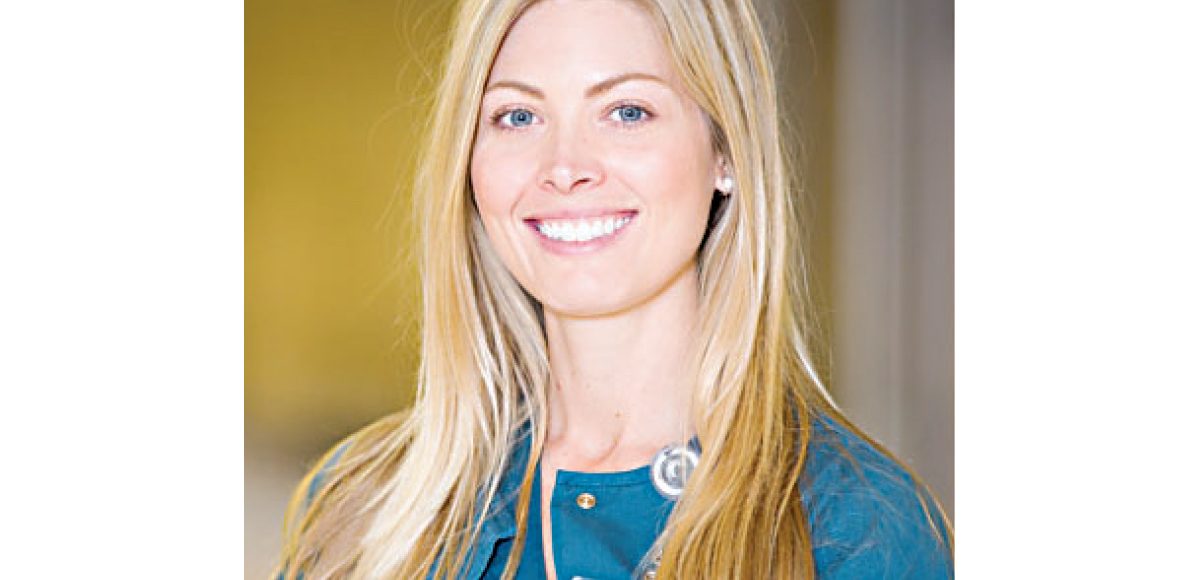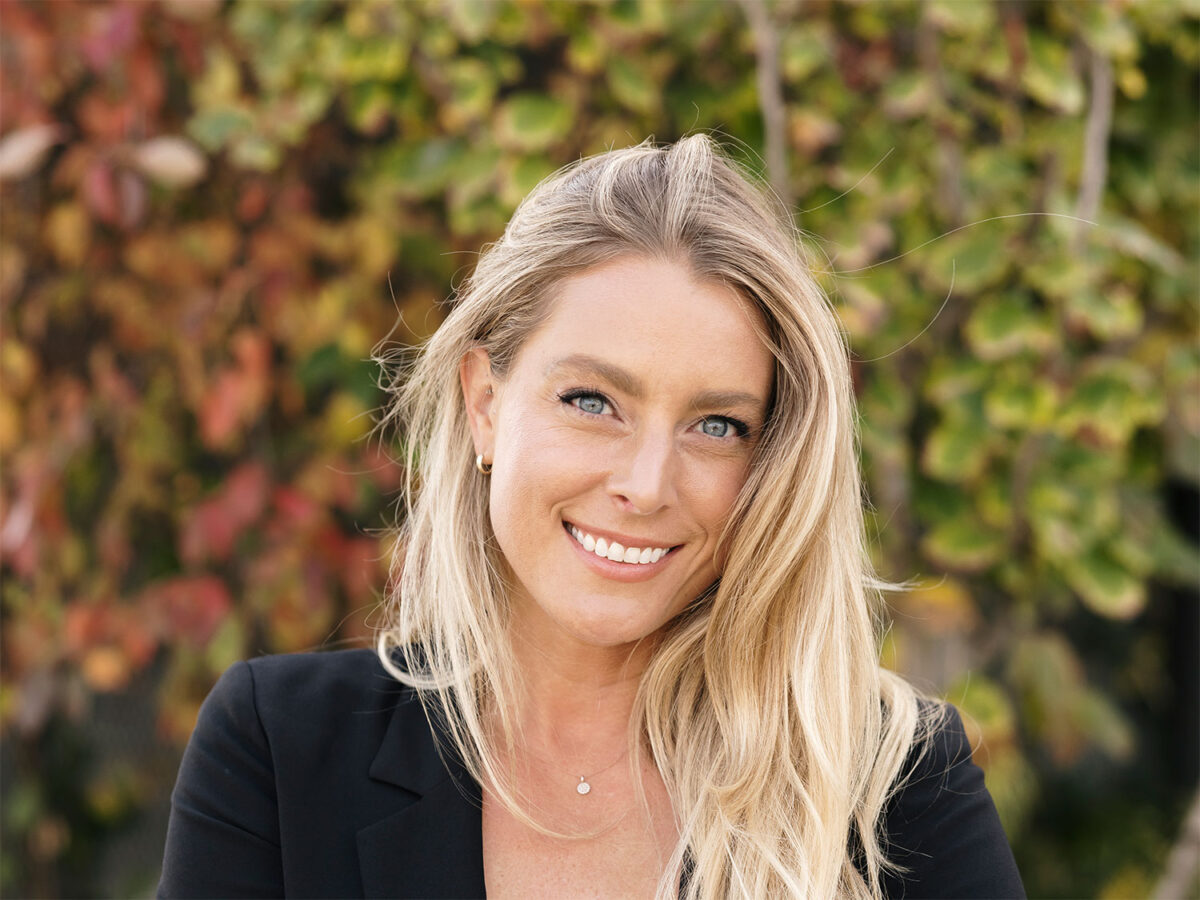In the first of our multi-part series, the Courier is profiling healthcare professionals at the frontlines of the COVID-19 crisis. Marisa Goldberg is an ER nurse at Cedars-Sinai Medical Center. She has spent her career there, serving two years on the floor in a medical/surgical unit and the past seven in the ER. Goldberg spoke with the Courier about conditions under COVID-19, both professionally and personally (she is married with a toddler son); and the community spirit that is making all the difference.
Beverly Hills Courier: We’ve seen a lot of reports from nurses around the country describing the impact of the virus on their work experience. How has your daily routine been affected?
Goldberg: In my nine years of nursing, I’ve never had my temperature checked before each shift.We were always careful in the ER, but now we take extra precaution when it comes to donning and doffing our protective equipment. After a 12-hour shift, my work shoes now stay in a Rubbermaid tub in my car. My scrubs come off immediately, often right into the washer. Before talking or touching my family, I get into the shower. Right now, everyone is doing the utmost to protect their patients and loved ones. I feel these are the major changes we’re going through right now.
Did you ever think you would be serving under these conditions?
Not in my wildest dreams. It all happened so fast. But we have a great team of administrators and managers who keep us in the loop. They are doing their best to provide daily updates. It’s hard because the information is evolving. We learn something one day that we have to change the next, just to keep patients safe. Nurses and the entire department are doing the best we can.
Healthcare professionals throughout the country are suffering without enough personal protective equipment (PPE). How are things for you?
I feel for my colleagues on the East Coast. I can’t imagine how they’re dealing with it. Luckily, we are not in that situation. There is no lack of PPE here. Our administrators are doing their best to secure it for us. We’ve had a tremendous response from the community, with donations of PPE on an almost daily basis. We have new N-95 masks for each shift. We have protective gowns and face shields. We have a new sterilization process in place in case we need to reuse anything. But it’s all according to CDC guidelines. With something as stressful as this is, knowing that we have the proper equipment makes it a little easier.
How are you segregating patients who come to the ER with virus symptoms from those there for other reasons?
Our doors are open to everyone. People are still having heart attacks and strokes. We do have a designated section for suspected COVID-19 patients with a lot of resources in that area to treat them. We don’t know that they have the virus without a test. But we use our best judgment in taking their symptoms into account. We have a tent set up outside for patients who are less acute, and we suspect COVID-19. Others come in who need to be stabilized. Some may need intubation and transfer to another area.
From what you are seeing in your ER, do you think we’ve hit peak numbers?
Based on my shifts from last few weeks, I feel it is hard to tell. Our tally is usually around 300 patients on a day-to-day basis. But, given that people are staying home, we’re seeing about 150 patients. The biggest reason we’re able to care for those sick with the virus during the pandemic is that people are staying home. That’s a huge factor. But our census is gradually increasing. We haven’t hit the surge yet as far as COVID-19.
Have you seen a change in the patients presenting to the ER?
Definitely. In the beginning, we saw a lot more people coming in. We were in peak flu season and had a lot of ILI, or influenza-like illness. It was hard to differentiate between COVID-19 and the flu. Now, we see more respiratory distress situations. Patients are advised to self-quarantine at home unless symptoms worsen. If it comes to that, they are advised to seek emergency medical care.
What has surprised you the most about the patients you are seeing with this virus?
In the beginning we were seeing a lot of elderly patients with comorbidities being hit the hardest. But now that’s not always the case. We see healthy, younger patients with no medical history come in so sick. From my experience, every case is different. I’ve seen people come in with respiratory distress who go upstairs and get discharged. Others I see deteriorate quickly. We are realizing that this can happen to anyone. The surprisingly scary thing about this virus is that it is new. We don’t have all the details about it.
How has your life changed outside of the ER?
I have a toddler son, so I do my best to make sure that he doesn’t get sick. My husband is working from home now. We used to have a nanny, but we’re having her stay at home. The days I work during the week, my husband is juggling conference calls and taking care of our son. I definitely listen to what the state is recommending we do. We use Instacart, DoorDash and rarely go out. If my husband goes to the grocery store, he wears a mask. He comes home and washes his hands. He has hand sanitizer with him and likes to go a little overboard on that. We don’t take our son out other than to the back yard. If we walk around the neighborhood, we keep our distance from others. We do a lot of Facetime and Zoom calls to family and friends.
Do you ever feel afraid about the risks you’re taking on a daily basis?
It’s always in the back of my mind, which prepares me as I go into work. I make sure I’m extra cautious. But once I’m there, I put everything into patient care and treatment. As a nurse you take an oath. We are all fulfilling that oath to the best of our ability. If I feel a little nervous, it doesn’t hit me until I am home and getting ready for bed. I don’t know what I would do if I wasn’t a nurse. The ER is my family. To think of them all working and fighting this battle without me would be unsettling. Every time I go in, I know that I am contributing.
Is there anything you’d like the public to know about what it’s like to confront this virus as an ER nurse?
As a profession, ER nurses have to put up an armor, be strong. On a daily basis, we have to be capable and brave. But we are also human. The saddest thing now is to have patients who are isolated and alone, especially those who are not doing well. We do the best we can for them, but it is so challenging. We are overwhelmed by the amount of support from the community at this time. People are donating meals to us. So many local businesses are helping out. It’s heartwarming to see the daily ‘thank you hours’ all around the country where people are clapping for healthcare providers. All around neighborhoods, people are leaving chalk artwork on the sidewalk. Every day, there are inspiring little messages, like ‘Everything will be ok.’ ‘Keep going.’ ‘Smile.’ All of the community support empowers and inspires us to keep going.







